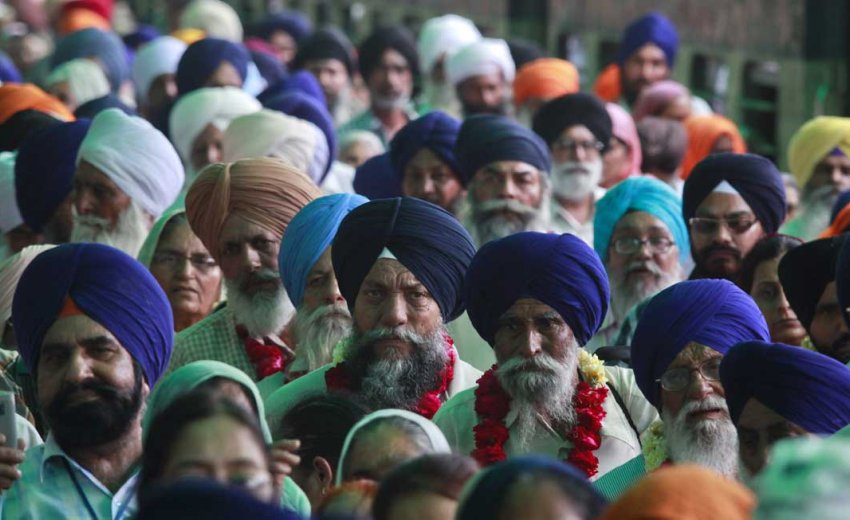Different religions around the world use different symbols and objects signifying their faith and to demonstrate their commitment to their religious beliefs. In Islam, one of the most recognizable symbols is the hijab, a headscarf worn by Muslim women as a sign of modesty and submission to God's will. For Muslim men, the kufi or prayer cap is a common religious accessory, often worn during prayers and special religious occasions.
In Christianity, the cross is arguably the most ubiquitous religious symbol, representing the crucifixion of Jesus Christ and as the central tenet of Christian faith. Christians often wear cross necklaces or pendants as a visible reminder of their belief in Jesus as the saviour. For the Sikhs, the turban is a prominent religious symbol, worn by Sikh men as a sign of their commitment to the faith, as well as a symbol of equality and humility. The Sikh kirpan, a ceremonial sword, is another important religious object, symbolizing the duty to protect the innocent and promote justice. These symbols and objects serve to visually represent the religious identities and beliefs of individuals across different faith traditions.
Representing faith through Turban
Individuals who choose to display outward religious symbols often do so as a reflection of their deeper faith. One such individual is Paramveer Singh, a sophomore in the College of Arts & Sciences, who wears a turban as a visible symbol of his commitment to Sikhism, a monotheistic religion founded in Punjab in the 15th century by Guru Nanak Dev Ji. Sikhism, at its core, promotes a love for both God and humanity, emphasizes the importance of earning an honest livelihood, and advocates for equal rights.
Sikhism was founded approximately 300 years ago and emerged as a response to the tyranny and oppression of India's caste system. Paramveer Singh explains that originally, only kings and higher-class members wore turbans. However, Sikhs adopted the practice of wearing turbans to break down the barriers imposed by the caste system and promote social unity.
For Singh, donning a turban is more than just a symbolic gesture; it's a tangible connection to the principles of justice and equality that he holds dear. He views it as his duty to represent his faith respectfully, particularly since he often encounters people who have never met a Sikh before.
Despite the occasional questions he receives about his turban, Singh appreciates the curiosity of others, as it allows him to share his beliefs and foster understanding. He began wearing a turban during his freshman year of high school.He says that wearing the turban is a choice that reflects the personal freedom Sikhs have in deciding when to adopt this practice.But practitioners who do not wear turbans are not looked down upon. While women can also wear turbans, it is generally a choice made by orthodox practitioners, as most Sikh women prefer to grow their hair.
Turbans have been in Sikhism for years
The Sikh turban, known as the Dastar or Dumalla, serves as a powerful symbol of Sikh values and teachings. It signifies the deep love for the Guru and the commitment to doing good deeds, reflecting the essence of Sikhism. One remarkable aspect of the turban is its message of equality, as both men and women are encouraged to wear it. Beyond its symbolic importance, the turban also has practical functions, such as safeguarding the long, unshorn hair of Sikhs and ensuring its cleanliness.
In the modern era, Sikh men commonly adopt four distinct styles of turbans: the Vattan Wali Turban, Amritsar Shahi Turban, Barnala Shahi, and Taksali Dumala. These turbans represent the evolving fashion choices within the Sikh community. However, traditional turban styles like the Darbara Singh Dummala, Dastar Bunga (the original turban of the Khalsa), and the Puratan Nok Pagg continue to hold a special place in Sikh culture, preserving the rich heritage and identity of the Sikh people.
Colourful and beautifully tied cloth-based headgear
Sikhs commonly wear blue, white, and black turbans, although other colours are also quite popular. Blue and yellow turbans hold special prestige, often donned during religious gatherings like Vaisakhi. The significance of these turbans varies; a white turban symbolizes a saintly life, while a slightly different shade of white indicates someone in the process of learning about Sikhism.
Akali Nihang Sikhs embellish their blue turbans or Dumalla by placing small weapons, known as shastars, within them. While the turban's colour may hint at one's affiliation with a specific Sikh group, no turban colour is exclusive to any particular faction. In Sikh weddings, pink is the preferred colour, ranging from vibrant magenta to delicate baby pink, adding joy to the occasion. Although some opt for red, maroon, or orange turbans, pink remains the most favoured choice. Generally, the selection of turban colours among Sikhs is a personal preference, influenced by fashion or personal taste, sometimes coordinated with their attire. Certain traditions link specific colours to occasions, such as orange and black turbans at political rallies, and red or pink turbans at weddings and other celebratory events.
*Based on an article by Brooke McEwen, published in Marquette Tribune on 17th October 2008

